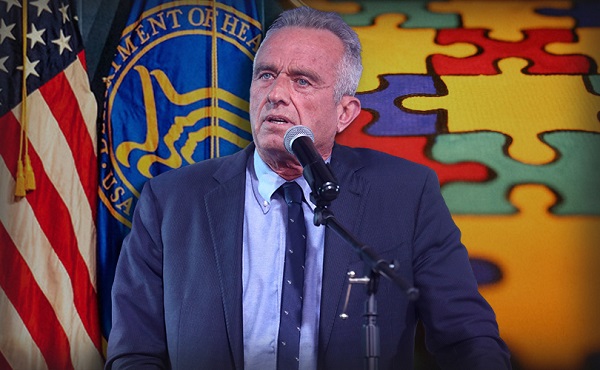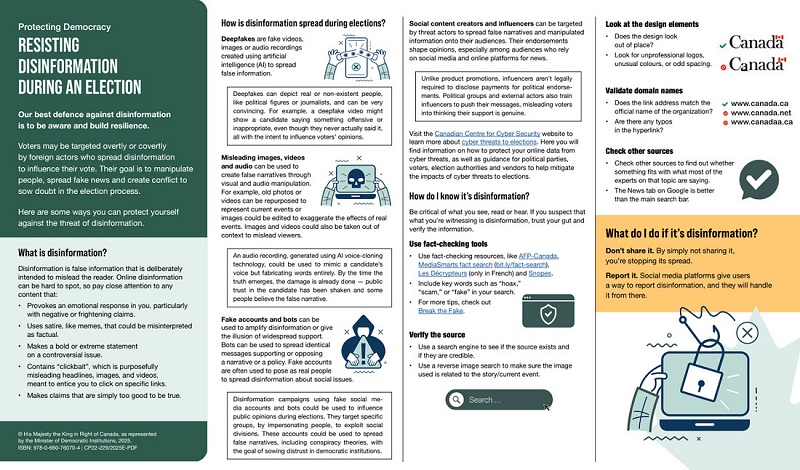Alberta
Federal Disaster Mitigation funding for Red Deer, Settler, Lacombe, Edmonton…

From the Province of Alberta
Alberta gets federal disaster mitigation funding
More than two dozen Alberta communities are getting new and replacement flood mapping to support emergency response and long-term planning.
The federal government is providing $8.7 million through the National Disaster Mitigation Program for 18 projects. They include new or replacement flood mapping for Drumheller, Medicine Hat, Siksika Nation, Red Deer, and more than 100 kilometres of the North Saskatchewan River, including Edmonton.
The province is contributing more than $5 million to the projects as part of the cost-sharing agreement.
“Our government is committed to investing in flood resilience to better protect Albertans where they live and work. The provincial and federal funding for flood mapping and community risk assessments will help us build safer communities over the long term and ensure Alberta is better prepared for severe weather events in the future.”
“The Government of Canada, in partnership with provinces and territories, is committed to reducing the impacts of flooding on Canadians by investing in projects that allow communities to identify, plan for, and reduce flood risks. Investing in programming like the National Disaster Mitigation Program is an important part of the Government of Canada’s strategy to address the soaring costs of natural disasters. The projects announced today will help the province of Alberta better prepare for and respond to floods.”
Provincial and federal funding will also be used to assess the potential for debris floods near Canmore, stormwater vulnerabilities in Calgary and flood risks in smaller communities such as Manning, Stettler, Lacombe and the Municipal District of Crowsnest Pass.
Projects to improve forecasting and warning systems and improve access and interaction with provincial flood-inundation maps also received funding.
Alberta has launched 13 river hazard studies since 2015, including those that are wholly funded by the province. In total, these studies will produce new and replacement flood mapping for over 1,300 kilometres of river through more than 30 communities. Many of these studies are nearing completion.
Since 2013, the Alberta government has invested more than $700 million in community-level resilience projects, erosion control, upstream storage, flood mapping, flood forecasting and emergency preparedness, and watershed health to improve flood and drought resilience across the province.
From: Public Safety Canada
National Disaster Mitigation Program funding to the Province of Alberta: Projects at a glance
Community Risk Assessment – Central Alberta
Total Project Value: $240,120
Federal funding: $120,060; Provincial Funding: $120,060
Project Start Date: September 5, 2017 (2 year project)
This project is producing a risk assessment, using the Provincial Flood Damage Assessment Tool (PFDAT), which will be used by community members and the province to better understand flood vulnerability for a range of flood events in four communities in Central Alberta: Carbon, Stettler, Millet, and Lacombe. With the improved capacity, these four communities will be able to better plan and implement mitigation strategies that will reduce the impact of flooding.
North Saskatchewan River Hazard Study
Total Project Value: $1,670,000
Federal funding: $835,000.00; Provincial Funding: $835,000.00
Project Start Date: August 22, 2018 (2 year project)
This project is assessing and identifying river and flood hazards along approximately 111 km of the North Saskatchewan River, from the western edge of 32-50-26-W4 to the eastern edge of 35-56-21-W4, including the Town of Devon, City of Edmonton, and the City of Fort Saskatchewan. The study reach extends through the following local authorities: Parkland County, Leduc County, Strathcona County including Sherwood Park, and Sturgeon County.
Red Deer River Hazard Study
Total Project Value: $1,530,000
Federal Funding: $765,000; Provincial Funding: $765,000
Project Start Date: August 1, 2017 (2 year project)
This project is assessing and identifying river and flood hazards within the City of Red Deer, the Town of Penholds, Red Deer County, and Lacombe County. The map will also be used to ensure future developments are not built in areas where flooding has been identified as a concern. In the event of a flood, the map will benefit emergency responders by helping them decide the best route of evacuation, as well as informing the best location for the construction of temporary flood control barriers.
Alberta
Made in Alberta! Province makes it easier to support local products with Buy Local program

Show your Alberta side. Buy Local. |
When the going gets tough, Albertans stick together. That’s why Alberta’s government is launching a new campaign to benefit hard-working Albertans.
Global uncertainty is threatening the livelihoods of hard-working Alberta farmers, ranchers, processors and their families. The ‘Buy Local’ campaign, recently launched by Alberta’s government, encourages consumers to eat, drink and buy local to show our unified support for the province’s agriculture and food industry.
The government’s ‘Buy Local’ campaign encourages consumers to buy products from Alberta’s hard-working farmers, ranchers and food processors that produce safe, nutritious food for Albertans, Canadians and the world.
“It’s time to let these hard-working Albertans know we have their back. Now, more than ever, we need to shop local and buy made-in-Alberta products. The next time you are grocery shopping or go out for dinner or a drink with your friends or family, support local to demonstrate your Alberta pride. We are pleased tariffs don’t impact the ag industry right now and will keep advocating for our ag industry.”
Alberta’s government supports consumer choice. We are providing tools to help folks easily identify Alberta- and Canadian-made foods and products. Choosing local products keeps Albertans’ hard-earned dollars in our province. Whether it is farm-fresh vegetables, potatoes, honey, craft beer, frozen food or our world-renowned beef, Alberta has an abundance of fresh foods produced right on our doorstep.
Quick facts
- This summer, Albertans can support local at more than 150 farmers’ markets across the province and meet the folks who make, bake and grow our food.
- In March 2023, the Alberta government launched the ‘Made in Alberta’ voluntary food and beverage labelling program to support local agriculture and food sectors.
- Through direct connections with processors, the program has created the momentum to continue expanding consumer awareness about the ‘Made in Alberta’ label to help shoppers quickly identify foods and beverages produced in our province.
- Made in Alberta product catalogue website
Related information
Alberta
Province to expand services provided by Alberta Sheriffs: New policing option for municipalities

Expanding municipal police service options |
Proposed amendments would help ensure Alberta’s evolving public safety needs are met while also giving municipalities more options for local policing.
As first announced with the introduction of the Public Safety Statutes Amendment Act, 2024, Alberta’s government is considering creating a new independent agency police service to assume the police-like duties currently performed by Alberta Sheriffs. If passed, Bill 49 would lay additional groundwork for the new police service.
Proposed amendments to the Police Act recognize the unique challenges faced by different communities and seek to empower local governments to adopt strategies that effectively respond to their specific safety concerns, enhancing overall public safety across the province.
If passed, Bill 49 would specify that the new agency would be a Crown corporation with an independent board of directors to oversee its day-to-day operations. The new agency would be operationally independent from the government, consistent with all police services in Alberta. Unlike the Alberta Sheriffs, officers in the new police service would be directly employed by the police service rather than by the government.
“With this bill, we are taking the necessary steps to address the unique public safety concerns in communities across Alberta. As we work towards creating an independent agency police service, we are providing an essential component of Alberta’s police framework for years to come. Our aim is for the new agency is to ensure that Albertans are safe in their communities and receive the best possible service when they need it most.”
Additional amendments would allow municipalities to select the new agency as their local police service once it becomes fully operational and the necessary standards, capacity and frameworks are in place. Alberta’s government is committed to ensuring the new agency works collaboratively with all police services to meet the province’s evolving public safety needs and improve law enforcement response times, particularly in rural communities. While the RCMP would remain the official provincial police service, municipalities would have a new option for their local policing needs.
Once established, the agency would strengthen Alberta’s existing policing model and complement the province’s current police services, which include the RCMP, Indigenous police services and municipal police. It would help fill gaps and ensure law enforcement resources are deployed efficiently across the province.
Related information
-

 2025 Federal Election1 day ago
2025 Federal Election1 day agoRCMP Whistleblowers Accuse Members of Mark Carney’s Inner Circle of Security Breaches and Surveillance
-

 Autism2 days ago
Autism2 days agoAutism Rates Reach Unprecedented Highs: 1 in 12 Boys at Age 4 in California, 1 in 31 Nationally
-

 Health2 days ago
Health2 days agoTrump admin directs NIH to study ‘regret and detransition’ after chemical, surgical gender transitioning
-

 Also Interesting1 day ago
Also Interesting1 day agoBetFury Review: Is It the Best Crypto Casino?
-

 Autism1 day ago
Autism1 day agoRFK Jr. Exposes a Chilling New Autism Reality
-

 2025 Federal Election2 days ago
2025 Federal Election2 days agoAI-Driven Election Interference from China, Russia, and Iran Expected, Canadian Security Officials Warn
-

 Bjorn Lomborg2 days ago
Bjorn Lomborg2 days agoGlobal Warming Policies Hurt the Poor
-

 2025 Federal Election1 day ago
2025 Federal Election1 day agoBureau Exclusive: Chinese Election Interference Network Tied to Senate Breach Investigation





